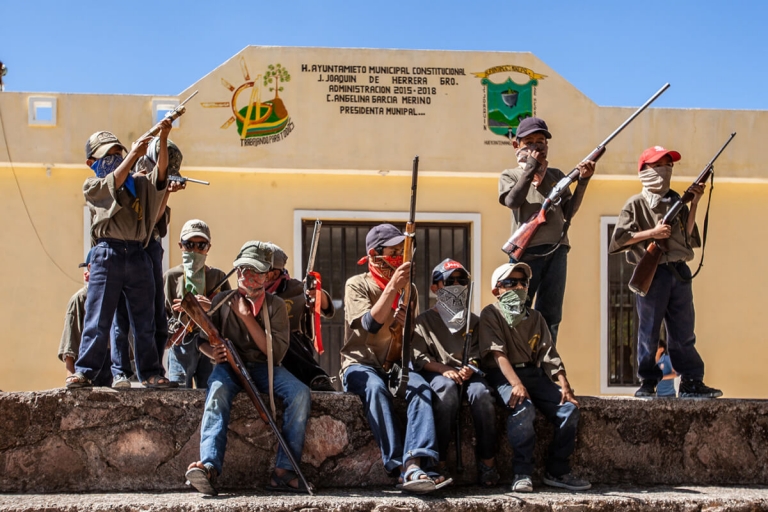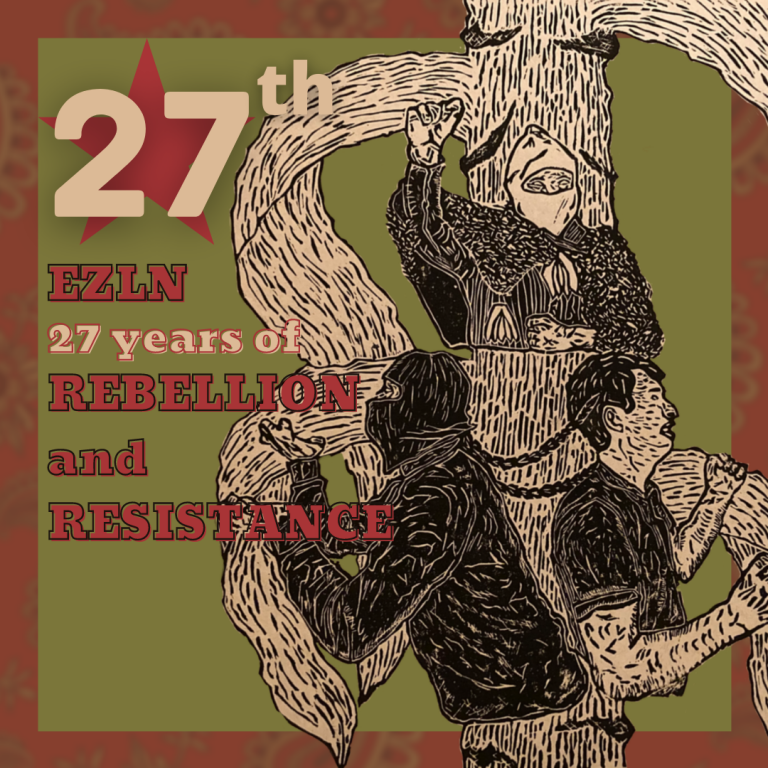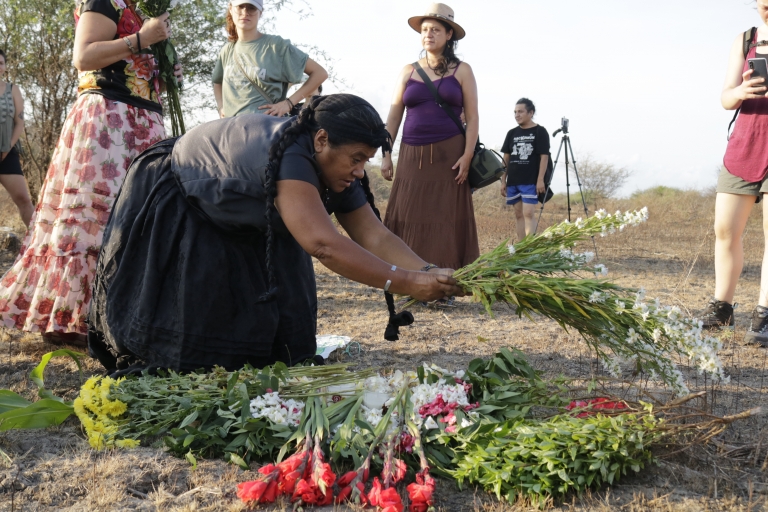by Luis Hernandez Navarro
Tuesday, September 15, 2020
Terror returned to Tila, Chiapas, hand in hand with the resurgence of the paramilitary group Desarrollo, Paz y Justicia [Peace and Justice]. The 836 ejidatarios [1] who succeeded in recovering their territorial rights have been targeted in a series of armed attacks, assassinations, sieges and aggressions of all kinds.
Between 1995 and 2000, Paz y Justicia murdered more than 100 indigenous Choles in northern Chiapas, expelled at least 2,000 campesinos [peasants] and their families from their communities, closed 45 Catholic temples, attacked Bishops Samuel Ruiz and Raúl Vera, stole more than 3,000 head of cattle and raped 30 women. Equipped with high-powered weapons, the paramilitaries controlled roads, administered public resources, and occupied seats.
The armed civilian group had the support of General Mario Renán Castillo, head of the Seventh Military Region. The military spokesman confessed—according to Jesús Ramírez Cuevas—that “this organization is the general’s pride and glory.” Days before the military left office, the leaders of Paz y Justicia said goodbye to him with complicit words of thanks. “We will never forget it, sir. Everything you did for us demands our gratitude,” they told him.
Paz y Justicia was a central actor in the low-intensity war that the government of Ernesto Zedillo orchestrated against the Zapatista Army of National Liberation (EZLN). They sought to secure territorial control of the strategic corridor that connects the Chiapas Cañadas with Tabasco and to derail, through fear and violence, the Chol process towards autonomy.
On July 2, 1997, the government of Chiapas agreed to give Desarrollo, Paz y Justicia 4 million 600 thousand pesos, “to promote agro-ecological and productive projects.” The document was signed by the paramilitary leaders, then-governor Julio César Ruiz Ferro and Uriel Jarquín, undersecretary of the state government. General Mario Renán Castillo signed the document as a witness of honor (Masiosare, 12/21/1997).
Beyond their military ties, the initiative to form Paz y Justicia came from the Salto de Agua livestock associations. It was founded in March 1995. Its political connections were PRI leaders from Tila. According to a report by the Fray Bartolome de las Casas Human Rights Commission, Salto de Agua, Palenque, and Playas de Catazajá are the municipalities in the Northern Zone of Chiapas with the largest private properties and in which ejidos [1] and Agrarian communities represent the smallest percentage of land ownership.
Its main chief, today a prisoner but formerly a PRI house representative, Samuel Sánchez Sánchez, explained that the creation of Paz y Justicia was a response to the “radicalization of the Zapatista and PRI sympathizers in the ejidos and communities (of Tila, Sabanilla, Salto de Agua, and Tumbalá).”
Its members were part of Solidaridad Campesino-Magisterial (Socama), an organization originally formed by the leadership team of section 7 of the SNTE (National Union of Education Workers) from the Pueblo group, headed by Manuel Hernández, Jacobo Nasar and Pedro Fuentes, and a dissident group from the CNC, directed by Germán Jiménez. The group, which took its name from the Polish union Solidarity, was closely linked to peasants’ struggles there. However, its pro-government drift began as a result of the arrest of its main leaders in 1986. With the arrival of Carlos Salinas to the Presidency, it became the replacement of the pro-government peasant organizations and since the Zapatista uprising of 1994, it has been an incubator for paramilitary groups.
The reconstitution of the Choles as a people and the construction of their autonomy has a long history behind it. Its “modern” phase includes the struggle for the end of the mosojüntel (“the time when we were servants” and against the Kaxlana oppression and the large coffee-producing companies, the Cardenista agrarian reform that allowed peasants to recover land, the return to peasant production of basic goods, the formation of an indigenous church, the organization of coffee cooperatives in order to appropriate the production process, the Zapatista uprising, the electoral struggle (1994 and 1995), the reconquest of the ejidos, and the formation of autonomous governments.
At the beginning of the new century, Paz y Justicia temporarily fell out of favor. First they fought each other over financial resources. Then some of its leaders were arrested. However, they managed to rebuild in the region under the cover of the Green Ecologist Party of Mexico (PVEM).
In fact, those who have attacked the Tila ejido are former municipal president Arturo Sánchez Sánchez and his son Francisco Arturo Sánchez Martínez, brother and nephew respectively of Samuel Sánchez Sánchez, who remains in prison. Also, the current mayor Limbert Gutiérrez Gómez, of the PVEM (Green Party) , as well as the regional delegate of Paz y Justicia, and technical secretary of the Chiapaneco Institute of Education for Youth and Adults, Óscar Sánchez Alpuche, associated with Ismael Brito Mazariegos, Secretary of Government of the State of Chiapas.
The reactivation of Paz y Justicia and its policy of terror in northern Chiapas is not an isolated event. Other paramilitary groups have re-emerged in Chenalhó, Chilón, Oxchuc and Ocosingo immediately after the Zapatistas announced the expansion of their autonomous governments and their rejection of the construction of the Maya Train. The counterinsurgency war continues.
Twitter: @lhan55
English translation by Sexta Grietas del Norte. The original Spanish was published in La Jornada under the title “Chiapas, el regreso de Paz y Justicia”
https://www.jornada.com.mx/2020/09/15/opinion/017a2pol?s=09
Notes:
[1] An ejidatario is a member of an ejido. An ejido is communally held land. The ejido system was an important aspect of land distribution programs in the wake of the Mexican Revolution. Until the Mexican Constitution was changed in 1992, ejidos could not be divided or sold.



